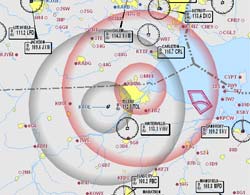 Six association presidents have requested that the Transportation Security Administration work with general aviation on ways to reduce business losses sustained under airspace restrictions during presidential travel.
Six association presidents have requested that the Transportation Security Administration work with general aviation on ways to reduce business losses sustained under airspace restrictions during presidential travel.
In a June 2 letter to TSA Administrator John S. Pistole, the association leaders called for a joint effort to minimize the effects of temporary flight restrictions (TFRs) that have been imposed—sometimes to a radius of 30 nautical miles from airports used during the president’s travel. The letter offered examples of aviation businesses suffering extensive revenue losses while their operations were curtailed because of the TFRs.
“This has been a continuing issue and we believe that we now are at a stage where practical and pragmatic steps can be identified to improve TFR design and implementation without in any way compromising the security of the President,” said the letter, signed by AOPA President and CEO Craig Fuller, Experimental Aircraft Association President and CEO Rod Hightower, General Aviation Manufacturers Association President and CEO Pete Bunce, Helicopter Association International President Matthew S. Zuccaro, National Air Transportation Association President and CEO James K. Coyne, and National Business Aviation Association President and CEO Ed Bolen.
Examples of financial losses by GA businesses from TFRs included a fixed-base operator at Chicago Midway Airport losing an average of $60,000 a day in revenue when President Barack Obama visits the Chicago area. “Also helicopter air tour operators in Hawaii and Las Vegas experience losses in excess of $ 150,000 during each Presidential visit,” they said.
The association heads noted that TSA and other agencies worked with aviation businesses last summer to keep flight operations running during a TFR at Martha’s Vineyard, Mass. That precedent could become the basis for the TSA to consult with industry on developing procedures that would let aviation businesses continue to operate “at near-normal levels” while addressing security needs during presidential travel.
The leaders offered the DCA Access Standard Security Program as a functioning example and a possible path toward allowing improved operational access to airspace during a TFR. “Already today, the DASSP allows qualified operators to conduct flights to and from Ronald Reagan Washington National Airport,” the letter said.
The association presidents emphasized that initiatives to enhance both security and business are both possible “during these difficult economic times.”



